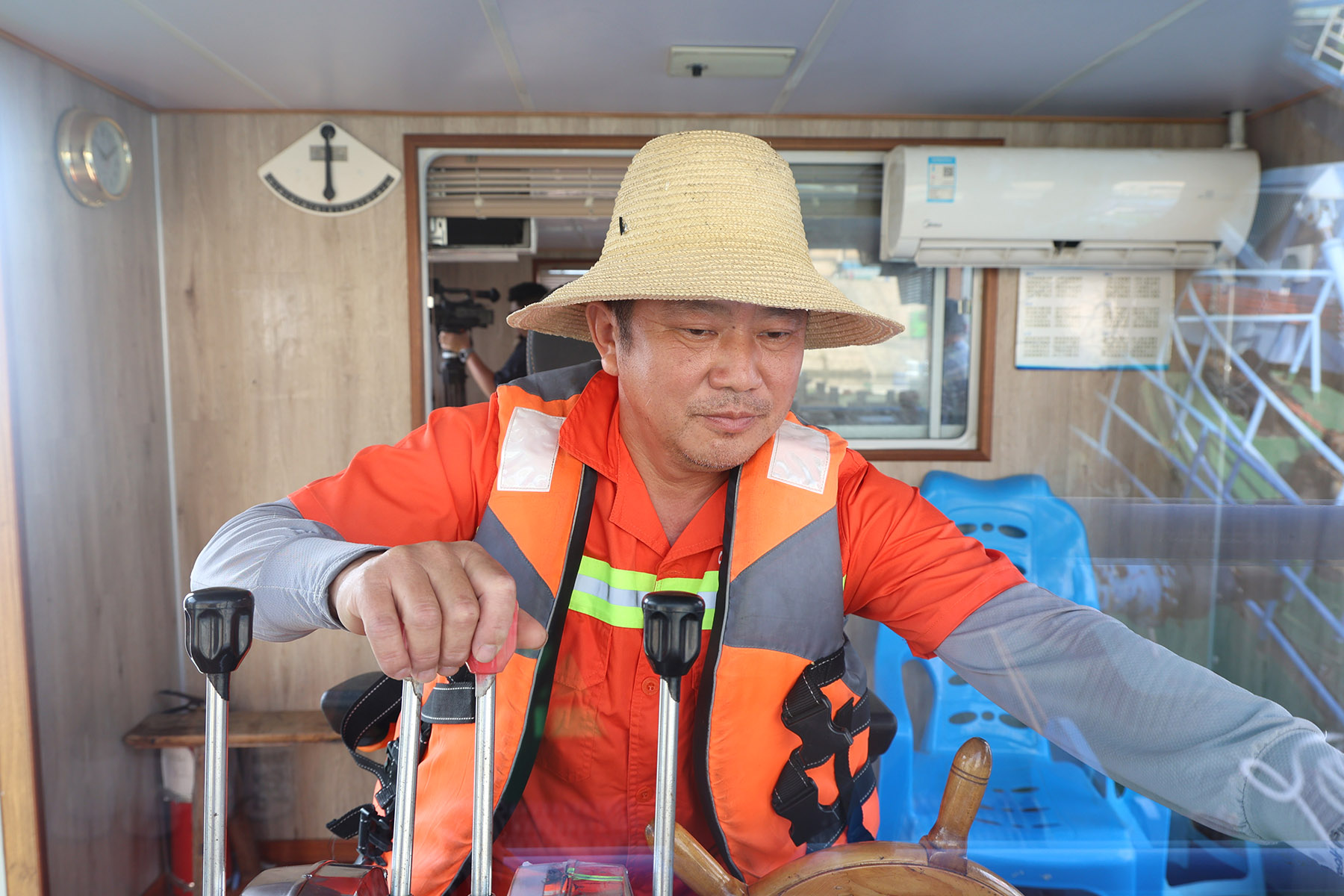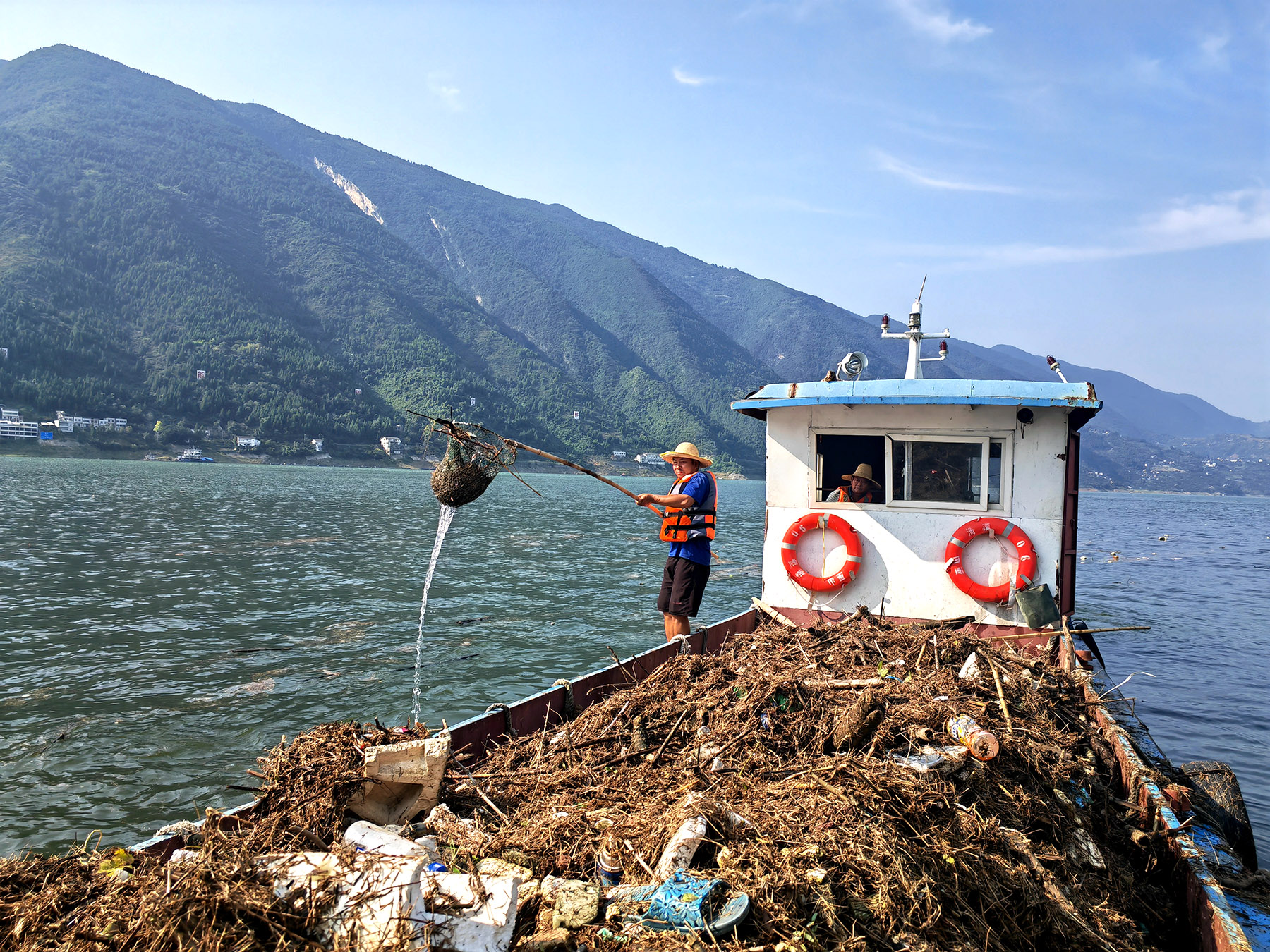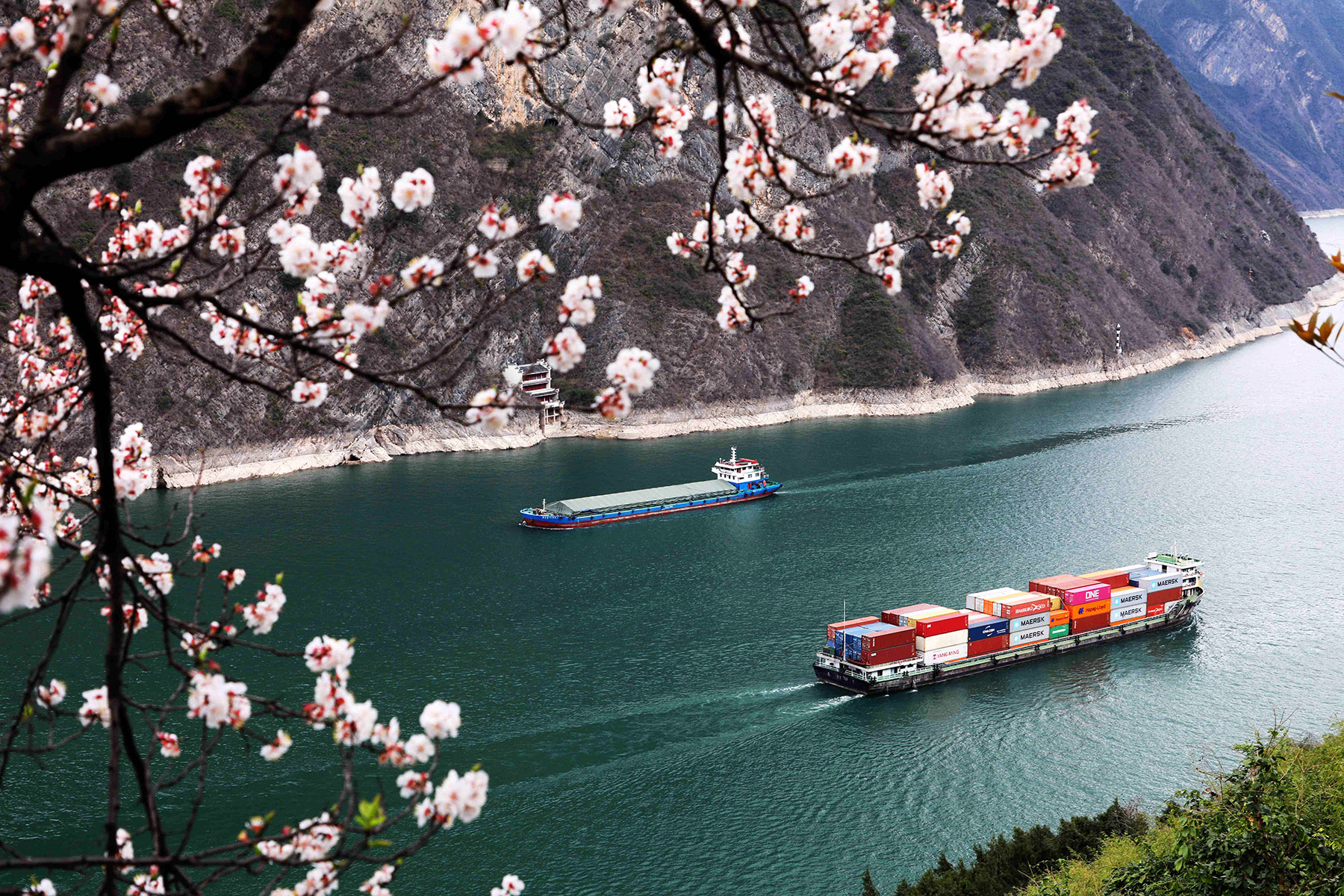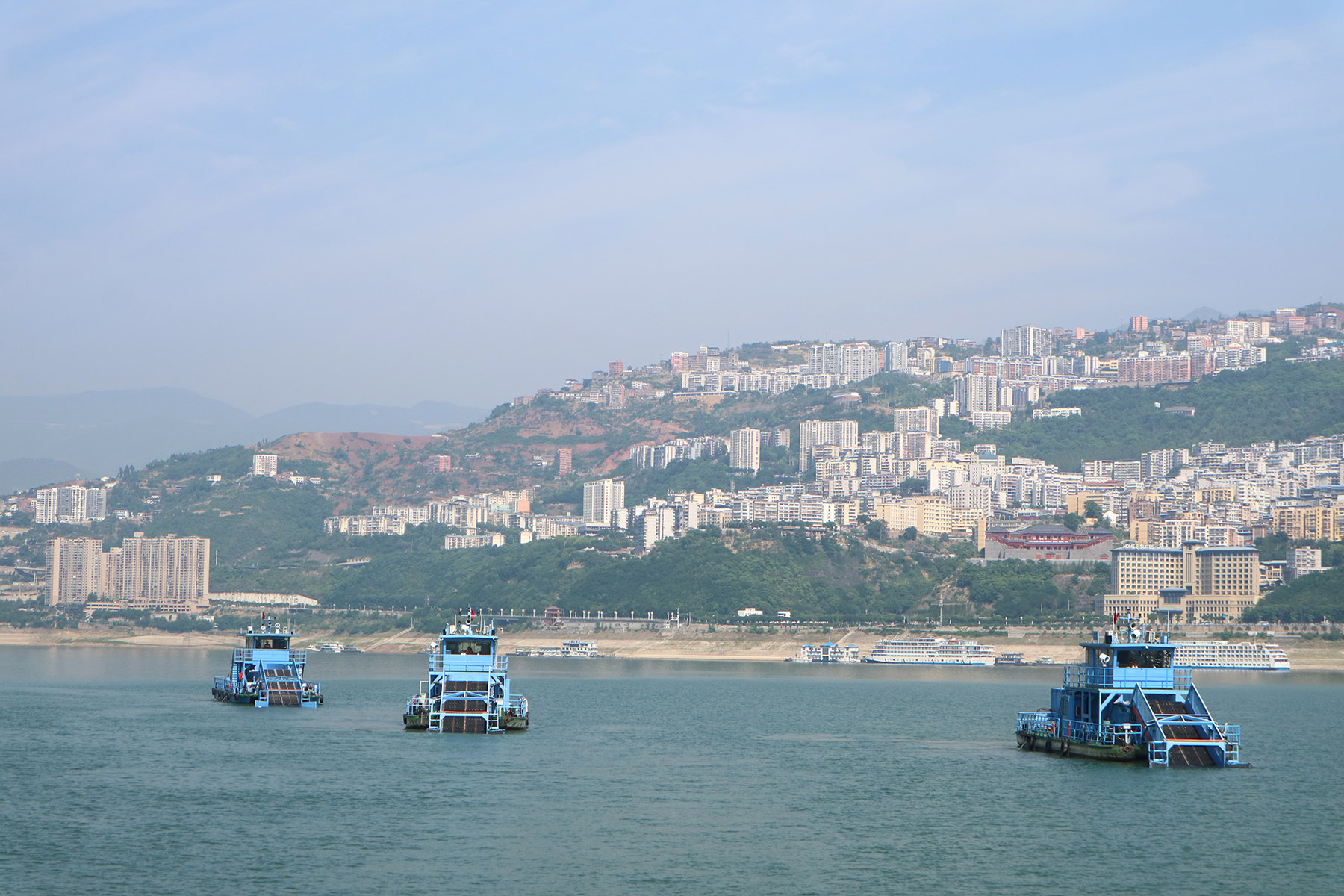Workers in Wushan county ply Asia's longest river so all goes smoothly downstream

Editor's note: As protection of the planet's flora, fauna and resources becomes increasingly important, China Daily is publishing a series of stories to illustrate the country's commitment to safeguarding the natural world.
Amid the burble and gentle hum of the engine, at 7 am Captain Zhang Xinghua sets off in his riverboat on another daily voyage to clean the Yangtze River as it flows through the county of Wushan in Southwest China's Chongqing municipality.
Zhang, joined by a crew of two, navigates a stretch of the Yangtze in Wushan removing flotsam and jetsam from Asia's longest watercourse.
"The water quality here has significantly improved compared to when I first started this job in 2008," the 50-year-old said. "Back then, when we cleaned up garbage, we found all sorts of strange things, especially plastic bottles and garbage bags."
READ MORE: Pollution control improves water quality in the Yangtze
Zhang said that nowadays the main floating debris consists of straw, dead branches and weeds washed down from the mountains by the rain.
"On a beautiful day like today, it's not rare to see such clear water with little waste," he said, noting that this progress makes his work fulfilling and gives him a strong sense of accomplishment.
With the source of the Yangtze being on the Qinghai-Tibet Plateau at 5,250 meters, the huge elevation fall of the river — as it makes its way 6,300 kilometers east before emptying into the East China Sea — means that it picks up a lot of debris along the way.

Located at the eastern edge of Chongqing, Wushan, with its fleet of 36 debris cleaning riverboats, filters the Yangtze as it makes its way down to the Yangtze River Basin, an area where over a third of China's grain is grown.
Thanks to its debris cleaning efforts and other measures introduced to protect the Yangtze River, the water in Wushan has been ranked as Class II for the past eight years, leading to increased biodiversity and improved living quality for the local people.
China categorizes the quality of surface water into five levels. Class I signifies water from source areas or national-level nature reserves that is safe for direct consumption, while the next best, Class II, includes water from centralized domestic supplies in first-grade protection zones or habitats for rare aquatic life, necessitating light purification before drinking.
As the final ecological barrier for the upper reaches of the Yangtze, Wushan bears a great responsibility for the rivers as it makes its way through the Yangtze River Economic Belt, an area of 2.05 million square kilometers, including 11 provinces and municipalities.
"The length of the Yangtze River within Wushan totals 183 km, comprising 55 km of the mainstream and 128 km of tributary rivers," said Yu Zhihua, head of the county's debris clearing team.
"The main floating debris in this area consists of dead branches and leaves. Their accumulation over time can not only affect people's visual perception, but also lead to decay when soaked, emitting odors, compromising water quality, and triggering a series of problems for aquatic creatures," Yu said.

He added that given the significance of the Yangtze River as a crucial waterway, an excess of floating debris can also affect the safety of the navigational channel.
Considering the profound environmental, ecological and transportation-related harm, the county introduced debris clearing operations in 2003. The fleet can remove some 20,000 metric tons of waste every year, at a cost of around 6 million yuan ($836,000), excluding additional expenses such as equipment purchases, Yu said.
Apart from the seven mechanized debris-clearing vessels, there are also semi-mechanized, manually operated debris clearing boats and transfer boats. While the introduction of mechanized boats has significantly enhanced operational efficiency, the manually operated boats are well-suited for clearing operations in tight spaces such as docks, he added.
"Because the floating debris is mainly washed down from the mountains by rainwater, the workload is relatively heavy during the flood season, typically from May to October, requiring sometimes all boats to be dispatched," Yu said.
The coordinated efforts of various regions along the course of the Yangtze River have had a ripple effect, making the cleanup work much easier, and three boats are enough for a sunny day like today, he said.

Wei Wei, an official from the county's ecology and environment bureau, conducts monthly evaluations of water quality with his colleagues.
"The on-site parameters of indicators including pH, dissolved oxygen levels and conductivity sometimes even meet the standards for Class I water quality," Wei said. "However, the most crucial factor affecting the water quality in this area is the phosphorus concentration, an indicator that cannot be measured with portable devices and necessitates further experimental evaluation.
"In 2016, the annual average concentration of phosphorus was 0.103 milligrams per liter. By 2017, it decreased for the first time to 0.092 mg per liter, satisfying the national standard for Class II water quality, which mandates a phosphorus concentration threshold at 0.1 mg per liter," he said.
Wei explained that high phosphorus concentration is mainly caused by human activities. Phosphorus originates from various sources such as agricultural runoff, industrial effluents and urban sewage discharges. A range of products, such as fertilizers, pesticides and soaps, contain phosphorus. When wastewater from these products is discharged directly into water bodies without sufficient filtration, it can lead to an increase in phosphorus levels.
Phosphorus serves as a crucial nutrient for microorganisms. Nevertheless, excessive phosphorus levels in water can trigger eutrophication, fostering the excessive growth of algae and other planktonic organisms. This can lead to severe repercussions, such as a decline in dissolved oxygen levels, degradation of water quality and substantial mortality among fish, Wei said.
Chen Peng, deputy head of Wushan county's ecology and environment bureau, said that given the critical environmental and ecological significance of the Yangtze River, a comprehensive set of measures focusing on bank governance, soil and water conservation, and sewage discharge control has been implemented to manage phosphorus inflow.
"Since the proposal of the 10-year fishing ban on the Yangtze River, our county has witnessed the retirement and docking of 325 fishing boats, the demolition of 24 illegal docks, and the cleaning up or rectification of over 60 small hydropower stations," Chen said.

In 2017, the Chongqing municipal government introduced a plan for a domestic waste classification system, and with the successful enforcement of mandatory waste sorting, the problem with the water quality primarily stems from natural causes or indirectly human-induced factors, rather than deliberate dumping, Chen said.
From the soil perspective, the challenging terrain of Wushan presents difficulties. The steep slopes of the mountains make them vulnerable to erosion during heavy rainstorms or persistent rainfall, causing sediment and loess to flow directly into the Yangtze River and pollute the water.
To address this issue, trees and grass have been planted to safeguard soil and water quality. This effort has resulted in a notable increase in forest coverage, with the current rate standing at 67.6 percent, Chen said.
The county has also promoted the standardization of agricultural practices and livestock breeding. This includes implementing centralized collection and processing of excrement and advocating for the use of environmentally friendly fertilizers, he added.
ALSO READ: Protection of Yellow River Basin stressed
In Wushan, sewage treatment plants have been constructed in towns and villages with populations exceeding 500, achieving a centralized treatment rate of 98 percent of urban sewage. A specialized dock has been established to handle ship and oil waste, preventing them from being discharged and protecting the Yangtze River from pollution, he said.
These measures have not only significant meaning to water quality improvement, but also bear important ecological significance, Chen said.
The annual average concentration of phosphorus in Wushan's stretch of the Yangtze was 0.047 mg per liter last year. There has also been an increase of 12 fish species in the area over the past 20 years.
"In the future, we will continue to prioritize the protection of the Yangtze River, harnessing technology to enhance our conservation efforts," Chen said, adding that more investment will be put into using technology such as artificial intelligence so that cameras can monitor and identify debris in real time and coordinate swift removal.
Contact the writers at limenghan@chinadaily.com.cn


